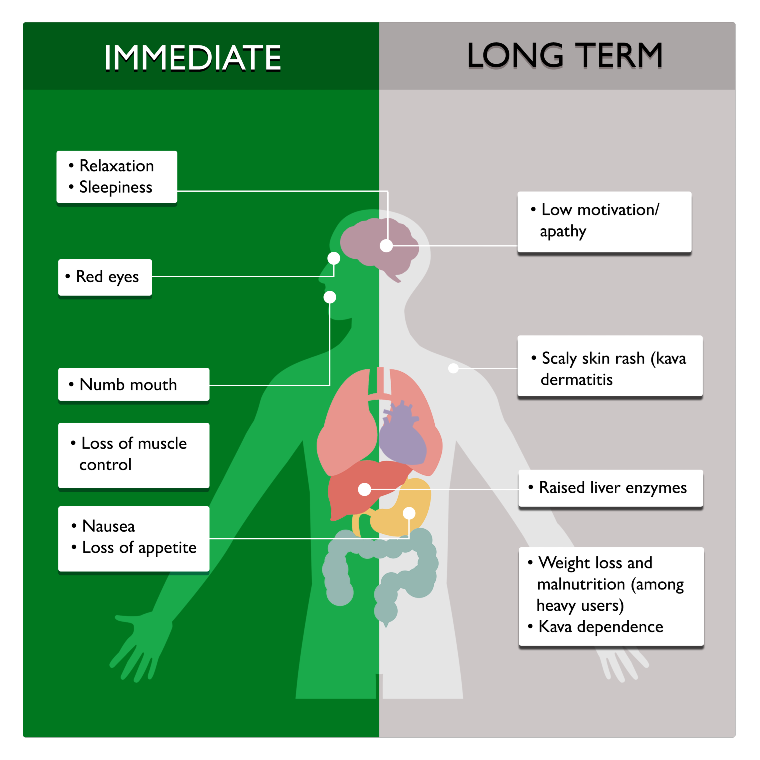What is kava?
Kava comes from the roots of the kava plant, Piper methysticum. The main active ingredient responsible for the psychoactive effects of kava are called kavalactones.
Kava is usually consumed as a drink, which is made by mixing crushed, ground, or chewed kava root in water. Extracts of kava can also be sold as a capsule.
Kava root powder is legal in Australia.
Kava is also known as kawa, kava kava, waka, wati, lewena, awa, yagona, yangona, sakau, and tigwa.
Who uses kava?Kava use is not common in Australia. Kava has traditionally been used by Pacific Island communities for cultural, ceremonial, and social purposes, with various traditions across cultural groups.
Kava is also used in some Aboriginal communities in the Northern Territory.
Kava extracts are also sold as a complementary medicine to treat anxiety and insomnia.
What are the effects of kava?Kava is a depressant, which means it slows down the body’s central nervous system function. This means it is not safe to drive or operate machinery when drinking kava.
Kava’s impact can depend on lots of different factors, including:
- The amount taken;
- The concentration of kavalactones;
- How quickly it is consumed;
- How regularly a person uses it;
- How it has been prepared;
- If any other drugs have been used at the same time.
Taking kava and alcohol at the same time can lead to greater sleepiness and loss of muscle control and may increase health risks. Find out more in Polydrug Use: Factsheet. There are reports of dependence and difficulties stopping use among some people who use kava regularly.
The effects of kava can be immediate or long-term, as listed in the table below.
| Immediate |
Long-term
|
| Relaxation |
Scaly skin rash (kava dermatitis) |
| Numb mouth |
Weight loss and malnutrition (among heavy users) |
| Red eyes |
Raised liver enzymes (liver enzymes are substances that help the liver to break down food and get rid of toxins) |
| Sleepiness |
Kava dependence (see glossary) |
| Nausea |
Low motivation/apathy |
| Loss of appetite |
|
| Loss of muscle control |
|

Evidence BaseThis factsheet was developed following expert review by researchers at the Matilda Centre for Research in Mental Health and Substance Use at the University of Sydney, and Dr Julia Butt from Edith Cowan University and the National Drug Research Institute, Curtin University.